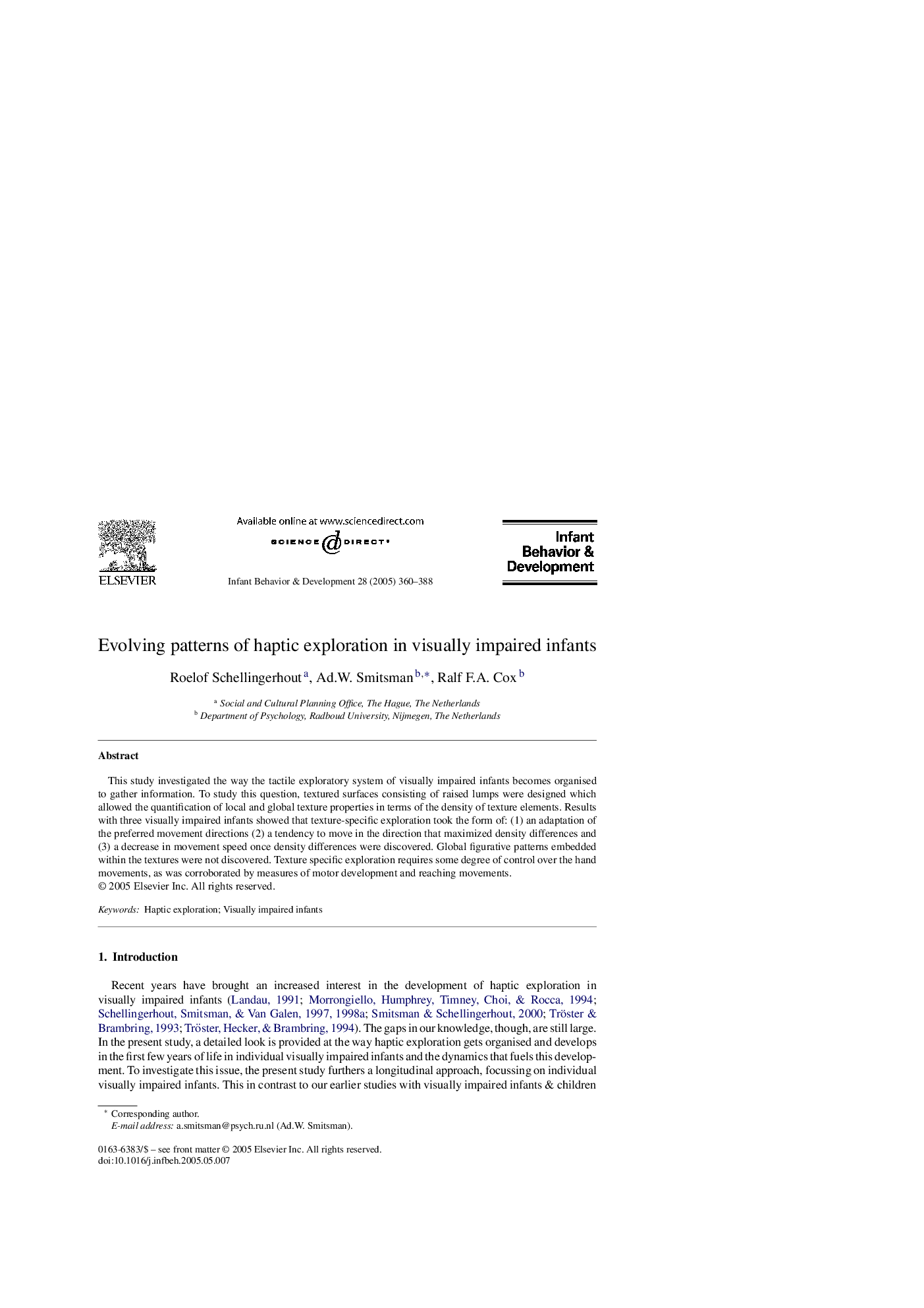| Article ID | Journal | Published Year | Pages | File Type |
|---|---|---|---|---|
| 10452886 | Infant Behavior and Development | 2005 | 29 Pages |
Abstract
This study investigated the way the tactile exploratory system of visually impaired infants becomes organised to gather information. To study this question, textured surfaces consisting of raised lumps were designed which allowed the quantification of local and global texture properties in terms of the density of texture elements. Results with three visually impaired infants showed that texture-specific exploration took the form of: (1) an adaptation of the preferred movement directions (2) a tendency to move in the direction that maximized density differences and (3) a decrease in movement speed once density differences were discovered. Global figurative patterns embedded within the textures were not discovered. Texture specific exploration requires some degree of control over the hand movements, as was corroborated by measures of motor development and reaching movements.
Keywords
Related Topics
Life Sciences
Neuroscience
Behavioral Neuroscience
Authors
Roelof Schellingerhout, Ad.W. Smitsman, Ralf F.A. Cox,
